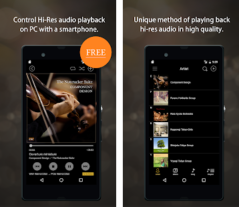
I think we’ve shown that once any music player begins to actually play a track it most go somewhere to be heard: your computer’s sound card, a USB connected DAC, etc. iTunes is set up to make sure the user experience is never in question and the net result of that, from a high-end perspective, is an unfortunate up and down sampling of all the music that passes through the program. And who can blame them? Although it’s widely accepted that Steve Jobs himself was one of us and cared deeply about the way audio sounded in his home,Audiophiles make up only a tiny percentage of music lovers the world over. Here’s the deal: iTunes’ primary objective is to make playing music easy and to do that Apple sacrificed the ultimate fidelity that’s important to us Audiophiles. If you’ve managed to keep up with streaming audio in the magazines, you may have heard of these aftermarket programs that are add ons to iTunes – and since iTunes is the single most popular music management and playback program in the world – boasting tens of millions of users – one would question why anyone would spend money on adding an iTunes “helper” program like those I’ve just mentioned.
#Amarra hi fi series#
Gordon Rankin pretty much "wrote the book" on getting good sound out of USB and his superb products deserve all the success they can get.Through our mini series on streaming audio we’ve learned how iTunes finds and plays a track on your hard drive but we haven’t yet learned why programs that circumvent iTunes, like Amarra, Pure Music and Bit Perfect exist at all. If you decide to go the USB route I would definitely check out the Wavelength Proton. Regarding choice of DAC, for $1k you have plenty of options.

Might be worth surveying your radio environment before going that route. If you live in an appartment block with lots of WiFi access points within range or a house with very thick brick or stone walls you might experience problems with interference or dropouts. Airplay has the convenience of being wireless but also the drawback of being, well, wireless. getting music from a hard disk to a DAC via iTunes, at least as far as "standard" resolution 16/44.1 is source material is concerned. On your second point, yes, USB and Airplay are both means to the same end, i.e. Each incremental improvement is small in and of itself but the cumulative effect is quite significant.
#Amarra hi fi Pc#
You start of with a PC that is a general purpose computing tool and by the time you're done "optimizing" you have something that is essentially only usable for audio or close to it. Regarding needing a dedicated computer for audio, unfortunately your suspicion is not totally unfounded.
#Amarra hi fi windows#
It never, ever ends.įor general hints on setting up a PC for audio on a Windows laptop I would start here.

In any event we are having last year's argument since now the hot digital audio topic is PCM versus DSD.
#Amarra hi fi plus#
Plus I didn't have to wait around for asynchronous USB to get low jitter since the files are streamed via ethernet or wifi.

The really bad thing is that Windows Media Player is even worse." I even said as much in an earlier post: "Basically iTunes is a terrible program for playing back high quality audio and it also is not a very good music library management program. Bit perfect streaming without all the issues of either Windows or Apple. And I have never had to use iTunes.īy the way I actually agree with jackfish in that neither Windows nor iOS is perfect, particularly when it comes to playing music, which is why I chose to bypass the whole issue and go with a server based system, which is basically how the Squeezebox devices work. Sounds great!Īnd I've been listening to flac files with many different bit depths and sample rates for over 5 years now using various Squeezebox streaming devices which doesn't convert them - they are streamed as flac files up to 24bit/96kHz (192kHz flac files are downsampled to 96kHz and 176.4kHz is downsampled to 88.2kHz). I'm listening to FLAC music files (24/96) now, in iTunes, running through Amarra HiFi (which seamlessly converts them).


 0 kommentar(er)
0 kommentar(er)
